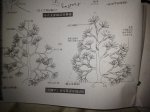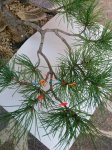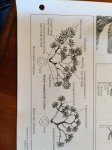montipirlo
Seedling
Hi guys,
I've got this JWP and i'd like to work on the 3 lowest branches, with particulary care for the first one ( lowest right )
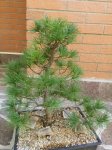

This is a zoom of fist brach. It's healtly, i removed some needles ( not too much and not all the olders ones )
and i wired down to get caching more ligth. I removed the wire to rest the plant for the autumn wire operations in which i'd like to define completely the first 3 branches.
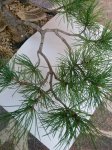
This branch has some problem:
1) Too straight the first section, (but with some wire i'll have reason of it)
2) Starting to be too leggy.
Zooming on a section of the first branch:
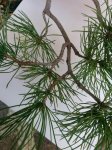
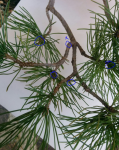
I've got some bud on the back side, one small bud ( the X one ), so i can make the branch go back of few inches, removing a lot of vegetation and power.
It'd like to develop the branch, make it bigger, let him grow. But on the other side i'm afraid to have a leggy one in some year or lose power on this branch.
How do i've to deal with it?
Cutting but this Winter? Cutting back next May/June? Let him grow?
Thanks
Davide
I've got this JWP and i'd like to work on the 3 lowest branches, with particulary care for the first one ( lowest right )


This is a zoom of fist brach. It's healtly, i removed some needles ( not too much and not all the olders ones )
and i wired down to get caching more ligth. I removed the wire to rest the plant for the autumn wire operations in which i'd like to define completely the first 3 branches.

This branch has some problem:
1) Too straight the first section, (but with some wire i'll have reason of it)
2) Starting to be too leggy.
Zooming on a section of the first branch:


I've got some bud on the back side, one small bud ( the X one ), so i can make the branch go back of few inches, removing a lot of vegetation and power.
It'd like to develop the branch, make it bigger, let him grow. But on the other side i'm afraid to have a leggy one in some year or lose power on this branch.
How do i've to deal with it?
Cutting but this Winter? Cutting back next May/June? Let him grow?
Thanks
Davide

